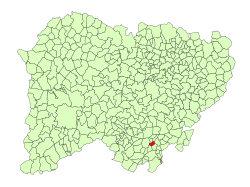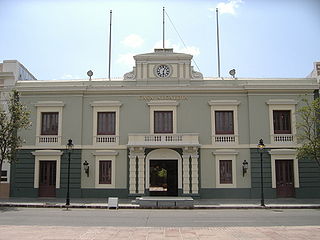
A municipality is usually a single administrative division having corporate status and powers of self-government or jurisdiction as granted by national and regional laws to which it is subordinate. It is to be distinguished (usually) from the county, which may encompass rural territory or numerous small communities such as towns, villages and hamlets.

Girona is a province of Spain, in the northeastern part of the autonomous community of Catalonia. It is bordered on the northwest by the province of Lleida, on the southwest by the province of Barcelona, on the north by France, and on the east by the Mediterranean Sea.
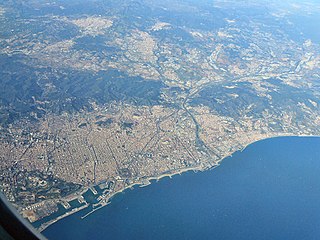
Barcelona is a province of eastern Spain, in the center of the autonomous community of Catalonia. The province is bordered by the provinces of Tarragona, Lleida, and Girona, and by the Mediterranean Sea. Its area is 7,726 km2 (2,983 sq mi). 5,609,350 people live in the province, of whom about 30% (1,620,343) live within the administrative limits of the city of Barcelona, which itself is contained in the Barcelona metropolitan area.
The municipalities of Puerto Rico are the second-order administrative divisions in the Commonwealth of Puerto Rico. There are 78 such administrative divisions covering all 78 incorporated towns and cities. Each municipality is led by a mayor and divided into barrios, though the latter are not vested with any political authority. Every municipality is governed by the Autonomous Municipalities Act of 1991, which establishes that every municipality must have an elected strong mayor with a municipal legislature as the form of government. Each legislature must be unicameral, with the number of members related to adequate representation of the total municipality's population. In contrast to other jurisdictions, both the mayors and the municipal legislators are elected on the same date and for the same term of office.

Spain and its autonomous communities are divided into fifty provinces. Spain's provincial system was recognized in its 1978 constitution but its origin dates back to 1833. Ceuta, Melilla and the Plazas de soberanía are not part of any provinces.
Mexico City as a territorial and administrative unit is, alongside the 31 states of Mexico, one of the 32 federal entities of which Mexico consists. This entity was until 2016 the "Federal District", but since then, the entity has simply been known as "Mexico City".

Municipalities are the second-level administrative divisions of Mexico, where the first-level administrative division is the state. As of the establishment of two new municipalities in Chiapas in September 2017, there are 2,448 municipalities in Mexico, not including the 16 delegaciones of Mexico City. The internal political organization and their responsibilities are outlined in the 115th article of the 1917 Constitution and detailed in the constitutions of the states to which they belong. Municipalities are distinct from cities, a form of Mexican locality; some municipalities as large as states, while cities can be measured in city blocks.
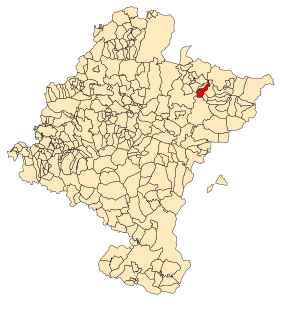
Abaurregaina / Abaurrea Alta is a municipality and inhabited locality situated in the province and autonomous community of Navarre, northern Spain. It is situated some 70 km from the provincial capital, Pamplona. As of 2005 INE figures, the municipality had a population of c. 150 inhabitants.
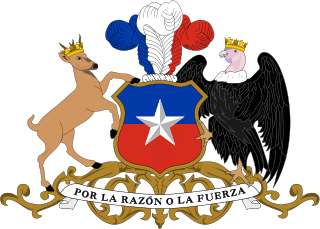
A commune is the smallest administrative subdivision in Chile. It may contain cities, towns, villages, hamlets as well as rural areas. In highly populated areas, such as Santiago, Valparaíso and Concepción, a conurbation may be broken into several communes. In sparsely populated areas, conversely, a commune may cover a substantial rural area together with several settled areas which could range from hamlets to towns or cities.
Poblacion or población is the common term used for the central, downtown, old town or central business district area of a Philippine city or municipality, which may take up the area of a single barangay or multiple barangays. It is sometimes shortened to Pob.

The municipalities of Spain are the basic level of Spanish local government.

Rucandio is a municipality and town located in the province of Burgos, Castile and León, Spain. According to the 2004 census (INE), the municipality has a population of 85 inhabitants.

Puerto Acosta Municipality is the first municipal section of the Eliodoro Camacho Province in the La Paz Department in Bolivia. Its seat is Puerto Acosta. At the time of census 2001 the municipality had a population of 27,296, still including Umanata and Escoma as cantons.

Cartagena is a Spanish city and a major naval station located in the Region of Murcia, by the Mediterranean coast, south-eastern Spain. As of January 2018, it has a population of 213,943 inhabitants, being the region's second-largest municipality and the country's sixth-largest non-provincial-capital city. The metropolitan area of Cartagena, known as Campo de Cartagena, has a population of 409,586 inhabitants.
Juan Simón's Daughter is a 1957 Spanish musical drama film directed by Gonzalo Delgrás and starring Antonio Molina, María Cuadra and Mario Berriatúa. It is based on the play by Nemesio M. Sobrevila. A 1935 film of the same title had previously been made.

The Voltoya is a river in Spain. It is a tributary river of Eresma River which is, in turn a tributary of the Adaja River that emerges from Douro River. Its starts in the mountains of Guadarrama and Malagón. The water from Dehesa de la Cepeda, enclave of the city of Madrid and the Azálvaro Field also flow into the Voltoya. It runs through the Castilian-Leonese provinces of Ávila and Segovia. Its mouth is in Coca (Segovia). The Serones Reservoir, which supplies drinking water to the city of Ávila is located on the Voltoya. Tributaries of the Voltoya on the left are the Tuerto, Ciervos or de Mediana rivers, which in turn receive the waters of the Cortos and the Saornil stream. It receives the waters of the Cardeña river and the Magdalena stream. The Torrelara reservoir, near Peromingo is located on these. It the N-110 and the AP-51 cross the river over concrete bridges. In the past a stone bridge of a single arch with granite keystones of granite was used as a crossing. Further downstream it the A-6 and the N-VI near Coto de Puenteviejo. Here it leaves the province of Ávila and enters that of Segovia, to pass through Juarros de Voltoya and the Nava de la Asunción.
